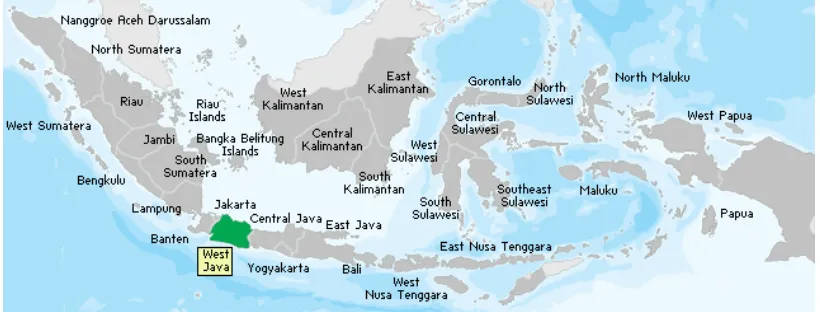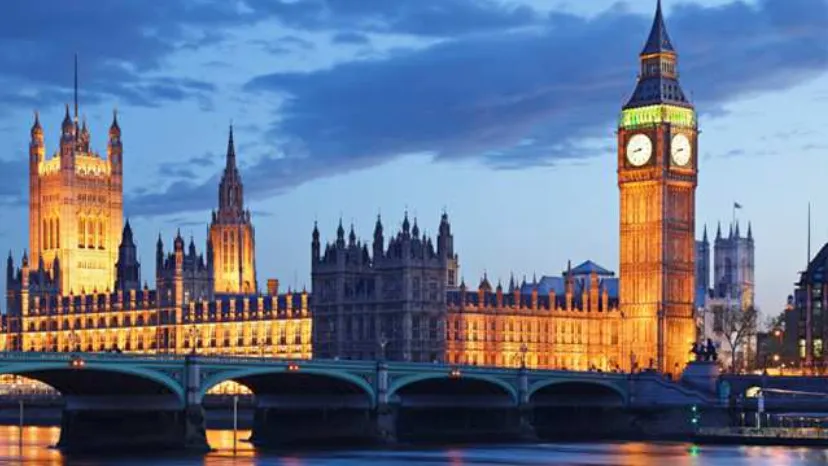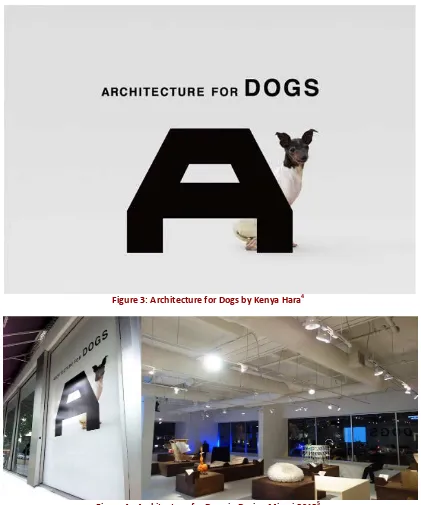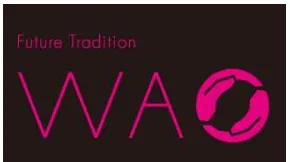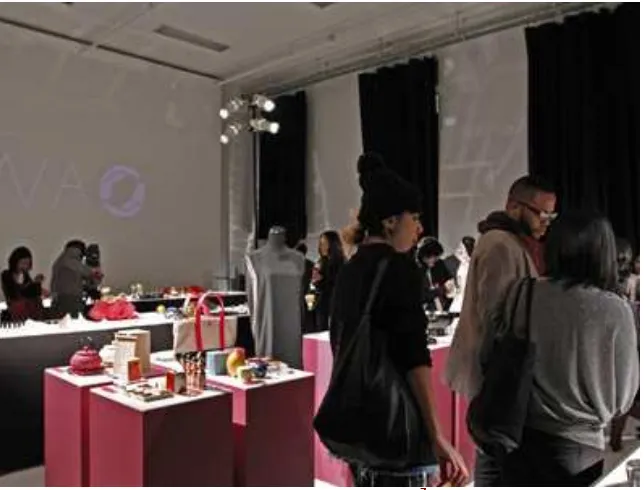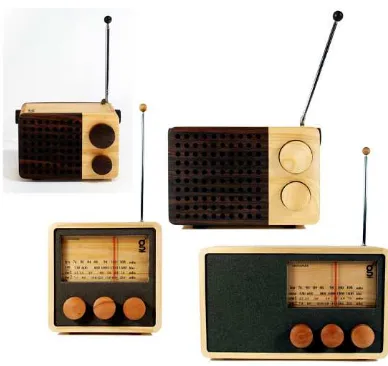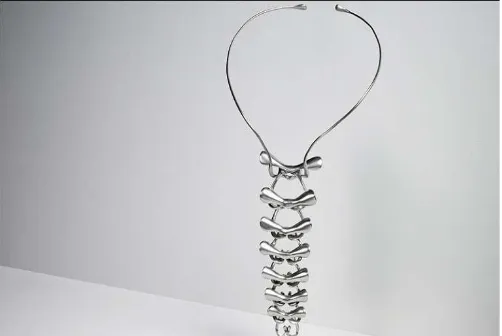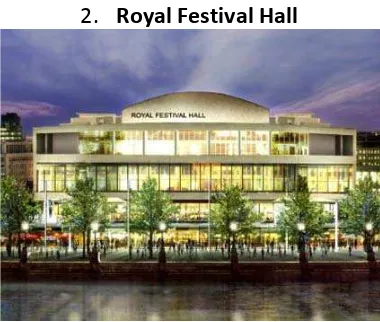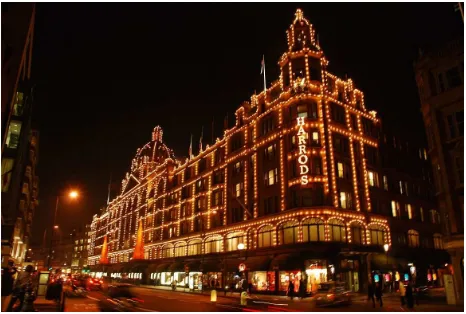PALAPA
INDONESIAN CONNECTION PROJECT
EXECUTIVE PROPOSAL
A project initiated by:
ENTREPRENEURSHIP & CAREER DEPARTMENT PPI‐UK 2013
Foreword
Being born in Indonesia is indeed a blessing for me. Since I was little, I have been exposed to vibrant cultural aspects in Java because my family’s frequent road trips to Java. These experiences shaped me as a person who really appreciates and admires the richness of culture in Indonesia. I think that there are a huge potential yet to be revealed from Indonesian culture that have been rooted from generation to generation.
During the recent year, the creative industry in Indonesia has risen up as one of the economic focus in Indonesia. This industry sector has produced many new entrepreneurs, who contribute significantly to the economic growth in Indonesia. This growth can be seen clearly from the huge number of creative industries exhibitions being held in Jakarta, the capital of Indonesia. Indonesian culture, through the development of creative industry, has risen once again as the lifestyle of Indonesians. I still believe that there are more to be revealed from Indonesian culture.
Last year, I came to know two great inspirational figures that changed my perspective: Kenya Hara, the art director of MUJI and Yoshiko Ikoma, the brain behind the WAO project. Their projects have completely created new fresh wave for the Japanese creative industries. These inspirations made me realise that this is the missing key to the development of Indonesian creative Industries. We need to create a new platform that will inspire many Indonesian so that creative industries can be merged together with modern lifestyle of global community, not just for the Indonesian. In order to achieve this vision, I hereby propose the Palapa project, as a part of a greater Indonesian Connection mission of our department.
I believe this is the right time to initiate this new fresh spirit to bring Indonesian creative industries to a new height, as currently Indonesia is starting to get high recognition and appreciation in the United Kingdom and the world, both economically and culturally. With a solid team working together intensively for this project, I have confidence that Palapa project will be the catalyst of the redefinition and radical development of Indonesian creative industry in the new height. Moreover, the climax of the Palapa project that will be held in London, will indeed provide a new level of perspective of Indonesian culture in the international world and a platform for economic connection of Indonesian creative industries to the world. I dream that Palapa project will become a motivation for many Indonesian enrepreneurs to start their business in creative industry nationally and internationally. The future of Indonesia lies in our hand, the young generation of Indonesians. So let’s all work together for this revolutionary change!
Albert Arron Pramono
CONTENT
INTRODUCTION
THE STATEMENT
THE PALAPA
VISION & MISSION
BACKGROUND
OVERVIEW
INSPIRATION
TARGET AUDIENCE
HOW IT WORKS
MANPOWER
PARTNERSHIP UNIVERSITIES
THE CURATORS
TIMELINE
PROJECTED BUDGET
THE CORE TEAM
CONTACT DETAILS
REFERENCES
THE STATEMENT
“ All men dream, but not equally. Those who dream by night in the dusty
recesses of their minds, wake in the day to find that it was vanity: but
the dreamers of the day
are
dangerous
men, for they
may
act on their dreams
with open eyes, to make them
possible
. “
‐ T.E. Lawrence ‐
INTRODUCTION
PPI‐UK (www.ppiuk.org) is the Indonesian Students Association in the United Kingdom, an independent student society that runs with an official support from the Indonesian Embassy in the United Kingdom. PPI‐UK acts as a body that connects the Indonesian students from all cities in the United Kingdom and Ireland. It actively organizes and supports many Indonesian‐related activities such as the annual
Indonesian Festival and the Indonesian Scholars International Convention.
Acknowledging the recent increasing positive relationships between Indonesia and the United Kingdom, the Department of Entrepreneurship & Career was recently established under PPI‐UK. It is hoped by the establishment of this new department, the Indonesian student in the United Kingdom will be able to reach opportunities in the United Kingdom, more than jus being student.
Department of Entrepreneurship & Career aims to help Indonesian students in the United Kingdom in Career‐related matters. Besides, we also aim to link Indonesia and United Kingdom in economic sector. Due to the recent positive climate of relationship between Indonesia and the United Kingdom, we see this as a rare opportunity to reach out more beyond what we are limited of as students.
In order to achieve the dream to create a strong economic linkage of Indonesia and United Kingdom, we established a system called “Indonesian Connection Project” in which the Palapa project is built. Palapa (codename) project is the first Indonesian Connection project which focus in art & creative industry sector. Art and creative industry sector is chosen as it is the sector that is most promising and quick to be implemented. This is because both London and Indonesia are raising in economy through it’s art & creative industry. Palapa project will create a new higher standard for the products of the Indonesian creative industries that in return will catch the attention of the world swiftly. The climax of this project would be the Indonesian Creative Culture Exhibition on the 20th – 22nd September 2013, London.
It is hoped that Palapa project can be the catalyst to create a better economic relation and opportunities from Indonesia to the international world. Besides, it will provide chance for Indonesian creative industry to reach a greater level of quality and concept. Promisingly, the prospect of this project will lift up many budding Indonesian entrepreneurs to start their business in the creative industry with a higher standard. Palapa project will be the first prototype of an online Indonesian creative cultures mapping.
Moreover, the spread system of Palapa project, which is strongly supported by the young generation through the connection of many universities around Indonesia will ultimately raised a even better connection between Indonesian from Sabang to Merauke. We have confidence that this project will bring a crucial impact for the future development of Indonesia and its people.
The Palapa logo comes from three important elements, which become the foundation of Palapa project.
RED
Indonesia has always been connected to the red color as it is one of the main colors of its national flag, “Sang Saka Merah Putih” (The Sacred Red and White). In Indonesian history, red represents the blood that had been shed by the Indonesian people during the war for independence. For Indonesians, the red color represents the audacity, courage, bravery, and the strong‐will of our team in making the impossible dream possible.
GATOTKACA FIGURE
Gatotkaca is a symbol for our Entrepreneurship & Career Department of PPI‐UK 2013. Gatotkaca is famous in Indonesia as a superhero in the Wayang, culture which which originates from the well‐known tale of Mahabharata. Gatotkaca has a superpower that can make him fly without wings. He is often called as “Otot kawat tulang besi” – The man with wire muscles and steel bones. He is indestructible, almost immortal, and greatly feared by his enemies.
We believe that Gatotakaca can represent the Entrepreneurship & Career team 2013 best as we have a big dream to become a powerful catalyst for the development of Indonesia through its connection with the international world. Even though Entrepreneurship & Career Department is a newly established department in PPI‐UK,
“Palapa” is a codename for the first project of our concept of Indonesian Connection
Amangkubhumi of Majapahit Empire. In this oath, Gajah Mada promised to not rest until he could unify Nusantara. Under Gajah Mada’s provision, Majapahit Empire finally gained its utmost peak as one of the largest and strongest empire in the Indonesian history with area of reigns covering Indonesia, Malaysia, & Singapore.
Understanding the context of his famous oath in a modern world, Palapa project carries a similar trait of dream. With the first project focusing in creative industry, we aim to showcase the whole culture of Indonesia in a modern world, and to connect people from all around Indonesia. We believe that this project, which involves many universities around Indonesia, has the power to once again awaken the spirit of unity of all generations of Indonesians to make a better change for Indonesia.
VISION & MISSION
•
Connecting
Indonesian culture craftsmanship with modern function and luxury
• Uniting
young generation of Indonesian
fromSabang to
Merauke
. `
•
Become the base oflinkage
of London art culture with
Indonesian
creative industry
•
Showcasing
Indonesian richness inculture
and
craftsmanship
through anew media
.
•
Budding new business
deals between International world andIndonesian creative industry.
• Introducing Indonesian culture as a
modern lifestyle
, instead of just traditional culture.
•
Raising the bar
of international eyes upon Indonesia through culture.
• Emerging new possibilities of
Indonesian economy
throughculture.
• Create the very first
Indonesian online mapping
forcreative industries & culture.
• Establishing
entrepreneurship & business connections
toEurope & the world!
BACKGROUND
A. INDONESIA
Figure 1 Map of Indonesia1
Indonesia is situated at the equator and located between Asia and Australia as well as between the Pacific and the Indian Ocean, sitting between two continents and two oceans. Comprising of 17,508 islands, Indonesia is the largest archipelago country in the world. With a population of 237,6 million in 2010 (Badan Pusat Statistik, 2010), Indonesia is also the fourth most populous country in the world. In 2012 it ranked 50th out of 144 countries on the Global Competitiveness Index, a survey conducted by one of the leading economic research institutions based in Europe. A number of factors become elements of the competitiveness index including institutions, infrastructure, macro economy, health, education, market efficiency, technological readiness, business, and innovation.
Indonesia is a large country, consisting of an area of 1,904,569 sq km, of which 11.03% are arable land and 7.04% are permanent crops. As a member of the global economic society, Indonesia is also affected by external changes. To be able to compete internationally, it is necessary to respond to the transformation of the global economy. This is the external influences that greatly affect the economic transformation of Indonesia from an agrarian‐based economy to an industrial‐based economy. This is true when we look at the GDP composition by sector which is 15.3% in agriculture, 47% in industry, and 37.6% in service (Badan Pusat Statistik, 2010 ).
Indonesia, a country that is blessed with the richness of its natural resources and ten thousand of charming islands, is also blessed with hundreds of distinctive cultures. These individual cultures rooted back thousands of years which making them to be
1
deeply philosophical and they also represents the understanding of life of the beholders.
In recent year, these cultures started to rise up one by one not just to be a traditional culture being held by tradition, but transformed into a new culture where it fused with modern lifestyle in Indonesia. From batik, tenun ikat, and many more craftmanships are racing with each other to be the trend of the lifestyle of many Indonesian nowadays. From few years back, the creative industry in Indonesia budding off many new creative industry entrepreneurs which indeed raised Indonesian economically as a whole.
Up to 2007, the concept of creative industries has not received specific policy focus as development of industrial sector in Indonesia’s macroeconomic policy development. Market demand became the initial driving factor for the development of creative industries. The Ministry of Trade has developed a road map, namely Indonesian Creative Economy for 2010‐2025 in 2008. This policy is the starting point for the government to push the creative industries in the development of the nation’s industry. The Indonesian government began to design a blueprint for Indonesia Creative Economy. The Indonesian government has also adapted to local condition.
Since 2002 the creative industries in Indonesia has continued to experience an increase in the value of GDP. In 2002, the contribution of creative industries sector to GDP was IDR. 132 trillion (approximately GBP 9 billion) increasing to IDR. 151 trillion in 2008 (approximately GBP 10 billion) with a constant growth averaging 2.32% per year. Creative industries in Indonesia in 2008 absorbed 7.6 million workers, amounting to 7.53% of total labor force. The productivity rate of creative industries is also higher than other sectors amounting to IDR. 65 billion per worker per year (approximately GBP 5 million). This high labor productivity has a big impact on industrial output, which are sold domestically and exported abroad. In 2008 the export value of creative industries amounted to IDR. 114.9 trillion (approximately GBP 8 billion) with average export growth rate of 12.2% per year and contribution to total exports of Indonesia at 9.23%. The growth of creative economy in 2006 washigh, even exceeding the national economic growth. At that time, growth of national Gross Domestic Product (GDP) was 5.6% whereas creative industries growth reached 7.3%. This growth is ranked second after transport and communications sectors.
B. LONDON
Figure 2: London2
'When people think of London, invariably it is about the breadth and depth of our city's unrivalled creativity. From the gowns and the glamour of fashion, to cutting edge design and some of the brightest and best people working in film, London is home to astonishingly talented people whose inventiveness, drive and entrepreneurialism contribute to a sector that brings in around £20 billion and employs 386,000 people.”2
‐ Boris Johnson, Mayor of London ‐
London, one of the economic capitals of the world that has been recognized by its economic superpower, is also the world famous capital for creative industries. Realizing the potentials in its creative sectors, in 2012 the mayor of London, Boris Johnson, invested more than £ 2.3 million into the British Fashion Council Film London, and the London Design Festival to help boost the creative industries in London.3 The creative industries in London are the capital’s second largest economic contributors, worth more than £ 20 billion per year.
2 http://www.visitlondon.com/things‐to‐do/sightseeing/tourist‐attraction/london‐icons 3
http://www.london.gov.uk/media/press_releases_mayoral/londons‐creative‐industries‐critical‐ economic‐prosperity
OVERVIEW
Indonesian Connection is a project that aimed to connect Indonesian economy with the world. Our very first project under Indonesian Connection is focused on art & creative industries in Indonesia; we called this project “Palapa”. Palapa is aimed to introduce Indonesian culture with contemporary approach to the international world with the hope that it can become the catalyst to raise and accelerate the growth of Indonesian creative industries in the International stage.
We will begin this project by opening opportunities to any Indonesian industries/universities (a team must consist of enrolling university student and a craftsman at least) that are interested to take part on this project. We then conduct the first selection process. After that we will assign each of the participants with a specific Indonesian culture to be developed as their project. In order to do this project we will acquire the help of local universities around Indonesia to control, survey, and oversee the process of the development and production in Indonesia. At the same time we also prepare the exhibition in London. We will give 2 months for the whole production process of the creative products.
We also organize a board of curators to select the best 10 products to be presented in an exhibition to be held in London, United Kingdom. Products that are not selected for the exhibition will still be presented on an online catalogue, which will be aimed to be one of the most advanced online creative culture industries library of Indonesia. In the London exhibition, we are aiming to invite 10 creators of the best products to present their products in the exhibition.
We will invite buyers, designers, and people in the creative industries to come and see the exhibition with the hope that we can increase the understanding of the richness and beauty of Indonesian culture. We hope this event will become a catalyst of many transactions that will raise interest of international brands to take up Indonesian culture and to further promote growth of creative industries in Indonesia.
We aimed to arrange the exhibition of this project on September 20th‐22nd, 2013, a week after London Fashion Week (LFW). LFW is viewed as one of the best fashion weeks that many people in the world pay attention. Many potential designers, buyers, and creative companies will gather in London during this period of time and is indeed a crucial key of our Palapa project.
Partnership with Indonesian Universines
Partnership with Curators
Sponsorhip deal
Publicanon through Partner Universines
Parncipants Screening
Judging & Announcement
Launching of Online Indonesian Creanve Culture Mapping
THE INSPIRATION
A. ARCHITECTURE FOR DOGS ‐ KENYA HARA
Figure 3: Architecture for Dogs by Kenya Hara4
Figure 4: Architecture for Dogs in Design Miami 20125
4
Kenya Hara, the creative director of Muji Japan came out with an idea to use architecture to be a more definite function. He came out with an idea to create houses for dogs that can fit perfectly in a function of a house and has the character of the type of dog that the owner has.
He elevated the idea by inviting 10 well‐known architects and designers to work in this project which was named “Architecture for dogs”. He assigned each architect and designer with one type of dog. The outcome of the project was presented in a website in which each designer presented a doghouse followed by a DIY tutorial. The viewer of the site is invited to build the doghouse for their dogs, and uploaded the picture on the forum created for it. With this project, he is making a new community of dog lovers through modern function‐architect.
http://architecturefordogs.com/
B. WAO PROJECT ‐ YOSHIKO IKOMA
Figure 5: WAO Project Logo6
5
http://www.intertrend.com/itblog/2012/12/10/architecture‐for‐dogs‐in‐miami/
Figure 6: WAO Exhibition7
Yoshiko Ikoma is an independent fashion journalist who has previously worked for Marie Claire Japan for many years. She recently worked together with “Cool Japan”, a cultural organization under the Japanese government, to create the WAO project. WAO project is a project that merged Japanese traditional craftsmanship with modern luxury products. The resulting products were presented in an exhibition in Paris and New York. She collaborate together with creators, producer, and
international luxury brand products which made this project a resounding success that effectively promote and raise growth of the art and craftsmanship of Japan to the international stage.
o http://j‐collabo.org/interviews/yoshiko‐ikoma/
o http://cooljapan‐wao.com/data/concept.pdf
o http://www.meti.go.jp/english/policy/mono_info_service/creative_industries/p df/120104_01j.pdf
C. MAGNO RADIO ‐ SINGGIH SUSILO KARTONO
Figure 7 Magno Radio8
The designer of this award‐winning product is Singgih Susilo Kartono from Indonesia. He chose to work in wood crafting business because it has always a part of his life. He grew up in the village surrounded by plush trees. Residents of his village have always make their livelihood selling logs that have been cut into pieces. These activities which do not create value has always concerned this graduate of the Faculty of Arts and Design of the Bandung Institute of Technology.
Matching wood with radio was not done without reason. Radio is a tool that can be a friend of man. This philosophic matchmaking and the value it convey was what catapulted Singgih onto the world stage. His design won the 1997 International Design Award in Seattle, USA. The initial design was still a prototype in which the components were made from an actual radio. After that, he worked in a furniture company for seven years. In 2004 the company went bankrupt and Singgih return home and started his own business which become one of the most promising creative industry in Indonesia.
Awards won including Brit Design Award, United Kingdom; Design Plus Award, Germany; Good Design Award/G‐Mark, Japan; International Design Resource Award Seattle, USA; Indonesia Good Design Selection Awards.
o http://www.wooden‐radio.com/gb/index.php o http://www.magno‐design.com/
D. ESSENTIA – YUKI AGRIARDI KOSWARA
8
Figure 8 Essentia Necklace9
Essentia, is define as a jewelry inspired by a fictional paleontologist. The design was constructed by the visual stimuli she would come across in her works including symmetry, pattern, light and shades. The creation was put on show at a jewelry design extension to the London Fashion Week exhibition entitled BFC Rock Vault in 2012. The Palladium Jewellery Design Competition was launched to foster a new generation of jewelry designer to incorporate palladium within their creation. Essentia as the winning design is the work of Indonesian artist, Yuki Agriardi Koswara, as a student of MA Design: Ceramics, Furniture or Jewellery. Central Saint Martin’s College of Arts and Design.
o http://glam.co.uk/2012/02/yuki‐koaswara‐wins‐csm‐palladium‐jewellery‐design‐
competition/
o http://www.vogue.co.uk/promotions/palladiumvisions/default.aspx?page=galler
y‐csm&type=csm
o http://www.nytimes.com/2012/02/21/fashion/21iht‐rrocks21.html?_r=3& o http://www.professionaljeweller.com/article‐10910‐london‐student‐wins‐
palladium‐design‐competition/
o http://www.agriardi.com/p/column.html
9
: http://www.professionaljeweller.com/article‐10910‐london‐student‐wins‐palladium‐design‐ competition/ downloaded February 2013
TARGET AUDIENCE ‐ Exhibition
A.
The Audiences
Palapa project is a project that is focused on Indonesian art & creative industries. We hope that this project can bring better changes for the Indonesian economy. By planning to showcase the final products of Palapa project in London, we aimed to have an International audiences consisting of:
o Designers from all areas such as fashion designer, product designer, creative
directors, etc.
o Architects
o Businessmen
o People who working in the creative industries
o Member of the international public
o United Kingdom Governmental bodies
o University students
o Indonesian who live overseas
B.
The Venue
In order to achieve expected target audience, we plan to run the exhibition of
Palapa project in conjunction of London creative Industry major event, London Fashion Week for Spring 2014, which will run around September‐October 2013. Below are some of possible venues located in the heart of London, which we aim to get for the exhibition.
1. Saatchi Gallery, London
Figure 9: Saatchi Gallery, London10
2. Royal Festival Hall
Figure 10: Royal Festival Hall, London11
3. Harrods
10
http://www.saatchi‐gallery.co.uk/
11
Figure 11: Harrods12
12
TARGET AUDIENCE ‐ Participant
Palapa Project will be opened for all Indonesian from all part of the country. The setting up of universities partnership around Indonesia will provide a platform of submission for every Indonesian who is interested to pursue this opportunities. People who might join this competition are:
‐ Current creative industries player from fashion, crafts, etc.
‐ Potential creative industries’ entrepreneurs who want to start their business in the creative industries sector.
‐ Anyone who wants to start up a new entrepreneurship business
‐ Universities student who want to apply their thesis into the real world, and ready for production
‐ Architects who are inspired to develop Indonesian culture concept into a modern living/lifestyle
‐ Creative industry associations
‐ NGO that is interested to develop culture of Indonesia ‐ And many more!
Requirement of Participants:
1. Team must consist at least 2 enrolling university students (all majors) and 1 craftsman or expertise from related industry. Indonesian student in United Kingdom are allowed to join.
2. Submitted product or concept must be ready for production to meet demands.
3. Submission must include description on feasibility of shipping to international consumer.
4. Submission must fulfill the standard & requirement given.
5. Submitted product or concept details can be used by Palapa project for publication purposes.
HOW IT WORKS
A. FLOWCHART OF PROCESS
The activity will be started with a publication to stakeholders in Indonesia with the support of partner universities throughout the country. With the publication, the committee also accepts registration from the creative workers by way of submitting registration form, which includes a brief description of his/her creative products. During this proses, the partner universities will hold several workshops to give a brief understanding on the project and final product requirement, and also empower them with relevant important knowledge.
After deadline of registration, the committee then will screen all submissions under predetermined requirements. All qualified applicants then will be invited to submit their creative products as proposed in the registration. Here in the process, the partner universities team will survey on the process of making of the products to make sure the products fit the requirements given.
professional international curating team, which will decide on the best 10 finalists to be invited for an exhibition in London, United Kingdom. 30 best products will be presented in the London exhibition. The Exhibition itself will take place on 20th to 22nd September 2013 in London.
Although only 10 finalists will be invited for exhibition, all submitted creative products will be published to a wider audience via the official Palapa project website. This website is a vision to create an online mapping of Indonesian creative industry that is based on cultures of each province.
In the process, the main core team of Palapa project will also present a product that has been developed to show as a representation from our department. Besides we hope this product that our team produce can become a real example that the high requirement that we set, can be achieved by anyone participating in this project.
B. Description of products submitted
Even though all Indonesian can apply to submit their products for this project, the product that is submitted must follow a number of predetermined requirements. From the first application submission process, we will select the potential ideas that reflect the value being held by this project.
The requirements of the product are:
1. Based on a
deep‐rooted Indonesian culture
.
2. A
fusion
of traditional craftsmanship technique in
modern
and new media.
3. Ready to be sold and has the
potential to go on production
in the future.
4. Represent
modern lifestyle
, not justaesthetically special,
but also practically useful.
5. Must have a
strong character
that can representIndonesian
culture
andprofessional craftsmanship.
6. Product created
can be used for our team marketing
purposes
even though product’s patent is in the authority of the product’s creator.
C. The Online Mapping of Modern Indonesian Cultures
Palapa projects will also provide a plattform to gather the informations of the potential culture that has been fused with creative industry of each Indonesian province. These informations will establish our vision of creating the first online mapping of Indonesian creative culture industry or in other word ‘The modern Indonesian cultures’. Anyone in the world will be able to look through the potential of each province in Indonesia and even find the details of each partnership university team contributed to this project. It is hoped that the availability of this online mapping will encourage and link the economic outlook of Indonesian creative industries with the rest of the world.
PARTNERSHIP UNIVERSITIES
A.
Partner Universities Responsibilities
Partner universities throughout Indonesia are an important part of the committee. Each university will become the centre for:
1. Marketing & Workshop
Partner universities will promote the project to the public on the region they covered. They will help out in the process of publication of the project to creative industries players, universities students, and also to budding Indonesian entrepreneurs. Further, they will also created several workshops to let the participant get the idea regarding the requirement and standard of the project, and also give insights and empowerment of the skills needed for the project (materials will be given from the main team).
2. Survey on Product Development
Survey is an important process as we need to make sure that the successful applicants of this project are:
‐ Making product that is up‐to‐the standard of the requirement given. ‐ Catching up with the deadline of the production.
‐ Documenting the process of making
3. Submission Centre
Partner universities will act as the submission centre for the first applications and the final products of Palapa project’s applicant. Partner universities will receive the final products from the participants. The final submission to the team in UK will be done online using dropbox website.
B.
Benefits for Partner Universities
Being a partner university for this project will indeed comes with variety of remarkable advantages that will be beneficial in the long run.
1. The Indonesian Connection
indeed large opportunities for partner universities to create a linkage and connection for further international projects that might be bigger and stronger. It is not impossible that in the future more connection projects can be generated between Indonesian students in Indonesia and overseas.
Further, this project will connect all partner universities in Indonesia that participated in this project. Different from the formally established Indonesian universities linkage, the bondage created here are the bondage between passionate students and Indonesians who are eager for a better Indonesia through real actions.
2. Link of creative Industry on their specific region
This project will help partner universities to gather the information of potential creative industries in their own region, making it possible for further studies and development of their region through prospective businesses that can be developed. By knowing the potentials of their own region, many entrepreneurs will start to develop ideas for business that utilize the character of their region.
3. Link of creative industry in other part of Indonesia
Partner universities will have chance to understand the potential of creative
industries and resources from other part of Indonesia through this project, opening possibility of fusing and integrating diverse cultures into a new identity and concept which potentially will create new business ideas and inspirations. In other way, this project will create a “potential cultures library” which can be used by many
Indonesian designers, any related industries, and even further researches and investigation of Indonesian culture by the universities or any other organization.
THE CURATORS
A.
Who are the curators?
In the second stage of submission, the selection of the 10 products to be presented in the exhibition will be done by a panel of curators which might range from a designer, academics, bussiness people on related area, etc. The requirement for the curators are:
1. A designer/photographer/academics/businessman who are related to the creative industries sector.
2. Indonesian or non‐Indonesian
3. Time availability for the online judging between July‐August 2013 4. Willing to give 10 reviews, one each for the 10 selected products.
B.
Judging Process
Being an internationally held project, distance might be a trouble. For this project, we are using a new system called ‘dropbox’ where all submission from each partner universities will be collated together by the team in the UK through an online storage sharing system. Then a copy of the database will be made for the curators to be judged online. This process will eliminate the limitation of distance as judging process can be done by the curators wherever they are.
C.
Benefits for Curators
Being a curator of this project will indeed have its own benefits, including:
1. Publication througout the whole project
As the curator of Palapa project, the person will be part of the publication of this porject which includes publication throghout Indonesia through the partner universities. Further, this project might also receive publication by Indonesian national medias, and we also not closing the possibility that this project might be publicised in the UK or any other part of the world.
2. Full detailed database of the products submitted
participants. It will potentilally help to venture on new business or conceptual possibilities through the products library that the curator have access to.
3. Linked to the Indonesian Connection & Participants
As the curator of Palapa project, the person will have a previledge to be helped by our team to be connected with any of the partner universities and also participants. The committee will help the connection process.
TIMELINE ‐ 2013
February Finalization of project concept (proposal)
Indonesian partner search
March Sponsorship search
Curator search
Indonesian university partner search
Approval & Support by Indonesian Embassy in UK & Acknowledgement & Support by Minister of Creative Industry
Acknowledgement & Support by British Council, British art council
Publication material creation
Exhibition Location Search
April Official Launch of the project
Selection of Applicants
Starting off the survey & overseeing process Preparation of Exhibition & Promotion Material
May – July Survey & Overseeing Process
Update of progress from the participating Industries & Universities
Report of Progress to Sponsors & Curators
July Submission of projects
Judging Process
Announcement of Result
Shipping of Products to UK
August Final Result of Selection
Invitation to come to London
Preparation of Exhibition
Promotion Material finalisation
Start of Publication of Event
September Preparation for Exhibition
Publication & Confirmation of Exhibits and Guests
20‐22 September 2013 PALAPA PROJECT EXHIBITION, LONDON
PROJECTED BUDGET
‐ TO BE UPDATED ‐
THE CORE TEAM
Albert Arron Pramono
Albert Arron Pramono, the head of Entrepreneurship & Career Division PPI‐UK 2013, is a student of MEng (hons) Chemical Engineering program in the University of Manchester. On his 1.5 years in the UK, Albert has been involved with many Indonesian society activities such as Manchester’s Indonesian Cultural Night and Indonesian Scholars International Convention 2012 in London. In his spare time he balanced his life with his hobby in the exploration of culinary art, photography, & travelling. In 2008, partnered with his friend, he was awarded 3rd and 4th positions for Asian Geographic Magazine’s Photojournalism competition for his team’s two submissions.
Previously he was awarded with the Singapore government ASEAN Scholarship to study in the prestigious Anglo‐Chinese School (Independent) International Baccalaureate Diploma Program (2007‐2010). He was a project leader and Vice‐ president in the school’s Interact club, which runs under the direct provision of Rotaract International. During his term of service, Albert established many social entrepreneurship projects in Singapore and in 2010 he led an international team for an overseas community involvement project to help three rural schools in Bromo, Indonesia.
Albert is currently working in a creative ideas resourcing & marketing team for a newly built Arumdalu private resort in Belitung Island, Indonesia. In 2012 he successfully implemented a new merchandise concept for Belitung’s market as part of Arumdalu’s marketing project. He is presently also involved with the R&D for the culinary art of Arumdalu’s restaurant and the second phase development project of Arumdalu resort’s concept.
Sonny Rustiadi
innovation. In 2010 Sonny was awarded a scholarship from the Indonesian Government to pursue his PhD in the Institute for Creative and Cultural Entrepreneurship in Goldsmiths University of London.
In addition to his experience working as a financial auditor for KPMG and an associate relationship manager for SENADA (a USAID program providing managerial consultation to SMEs in West Java Province), Sonny is also an entrepreneur himself. His ventures experience including a shoe‐making company, a property developer and management, and a telecommunication retailing business.
His passion for research is maintained by his active involvement in the Center for Innovation, Entrepreneurship, and Leadership (CIEL) within SBM‐ITB. Activities conducted including research, business consultation, management training, and annual international conference, IICIES (http://iicies.org/). In the international stage, Sonny is a member of the British Academy of Management. He is also one of the founding members from 10 different countries of the Asia Pacific Network for Cultural Education and Research (ANCER).
Gracia Stefani, the project leader of Entrepreneurship & Career Division PPI UK 2013 is a final year student of BSc Food Science and Business in Reading University. Gracia is one of the top students every year in Food Bioscience Department. Her life motto is having a balance life, so in the middle of busy student activities, she likes to spend times for her hobby, which is Polo. She has joined some of the charity polo tournament in this few years and currently she is planning to make a charity Polo tournament between Dubai vs Australia team in Bali.
Gracia graduated her high school in Kolese Santo Yusup, Malang‐East Java. She was active in Student Association Club (OSIS) and she also get involved in most of the annual projects held by school, such as “Pentas Seni” (Art Exhibition), KIC (Kosayu Intelligent Competition), and KBC (Kosayu Basketball Competition). Due to her strength of social interaction and networking, Gracia focused on sponsorship division most of the time during her involvement in organization.
Currently, she already runs her own cookies business at her hometown, Kediri‐East Java. This home industry business is focus on the biggest customer segment in Indonesia, which is medium to lower income sector. Moreover, she plans to diverse her business to beverage industry very soon. Meanwhile, Gracia is finalizing her dissertation project, which aimed to be published as a science journal in the UK this year.
Irdan Hakim Iskandar
Irdan Hakim Iskandar, the project leader of Entrepreneurship & Career Division PPI‐UK 2013. Have been working in marketing department with one of the biggest company in Indonesia which originally founded in Kudus on his early career has convinced himself to study Marketing in higher level of education. During his career in a marketing department he has learned and understand the basic of how certain segmentation of marketing ground rules are being applied in Indonesian market. Handling with sponsorship, strategic campaign and brand management along with his managers and colleagues are one of the precious knowledge that he ever acquired. Being a member of super premium brand team that has been establish in Indonesia for more than 40 years had lead Irdan to experienced 3 years in a row brand awards that given the product for #1 rank in the category with national scale award (Top Brand Award Indonesia by Frontier and Marketing magazine, year 2010‐2012).
Studying Master in Marketing (MSc) in University of Hertfordshire and both living nearby to his favorite football club Arsenal is a privilege that he enjoyed most at the moment. As a grandson of an Army General back in Soekarno’s early leadership and given thought that every man should contribute to his country, Irdan tried to find his way that he could apply the inspiration with his capability. Then he found PPI‐UK is the best way that he can share and contribute himself trough their projects as Indonesian student representative.
Geraldo Edison Tegouch
Geraldo Edison Tegouch is a Mechanical Engineering with Management (Meng,Hons) student in the University of Nottingham. He is actively involved in Indonesian Student Society of Nottingham and the Indonesian Festival 2012/2013 organising committee. He is currently the President for the Indonesian Festival 2013.
Geraldo was a part of ‘The Wall Street Society’ during his days in the University of Nottingham, Malaysia Campus. In this society, he led a group of student to organise the set up of Inter‐University Business Tycoon 2011, the largest Inter‐University business simulation game. He represented Indonesian team in Asian Pacific Astronomy Olympiad 2005 which was held in Irkutsk, Russia. He was awarded the second place of the category.
student online retail business. He developed the inventory system to support the business.
with many university activities such as Orientation Programme, World Language Festival, and World Food Festival.
He also did Sheffield Raising & Giving which known as Spiderwalk where all the participants walk 13 miles in the middle of the night at the peak district. Apart from volunteering work, He is a vice president of Sheffield Indonesian Society in this year while last year he was an inclusion officer. He also has high level of interest in business and enterprise session which known as ‘skill build’ where students were given basic of building an enterprise. Furthermore he also a member of the group that has a project called ‘fun mat’. It is an addictive learning program, such as games, for children to learn math.
CONTACT DETAILS
Entrepreneurship & Career Department PPI‐UK 2013
Head of Department:
Albert Arron Pramono
A. Entrepreneurship Division
Gracia Stefani
Sonny Rustiadi
Irdaan Hakim
B. Career Division
Geraldo Edison Tegouch [email protected]
Steven Angesty
REFERENCES
http://www.ppiuk,org
http://pardise‐in‐indonesia.blogspot.com/2010/06/provinsi‐west‐java_06.html
http://www.visitlondon.com/things‐to‐do/sightseeing/tourist‐attraction/london‐ icons
http://www.london.gov.uk/media/press_releases_mayoral/londons‐creative‐ industries‐critical‐economic‐prosperity
http://architecturefordogs.com/
http://j‐collabo.org/interviews/yoshiko‐ikoma/
http://cooljapan‐wao.com/data/concept.pdf
http://www.meti.go.jp/english/policy/mono_info_service/creative_industries/pdf/1 20104_01j.pdf
http://brixtonstreet.com/2010/11/giveaway‐areaware‐magno‐radio‐250‐value.html
http://www.wooden‐radio.com/gb/index.php
http://www.magno‐design.com/
http://www.professionaljeweller.com/article‐10910‐london‐student‐wins‐palladium‐ design‐competition/
http://glam.co.uk/2012/02/yuki‐koaswara‐wins‐csm‐palladium‐jewellery‐design‐ competition/
http://www.vogue.co.uk/promotions/palladiumvisions/default.aspx?page=gallery‐ csm&type=csm
http://www.nytimes.com/2012/02/21/fashion/21iht‐rrocks21.html?_r=3&
http://www.professionaljeweller.com/article‐10910‐london‐student‐wins‐palladium‐ design‐competition/
http://www.agriardi.com/p/column.html
